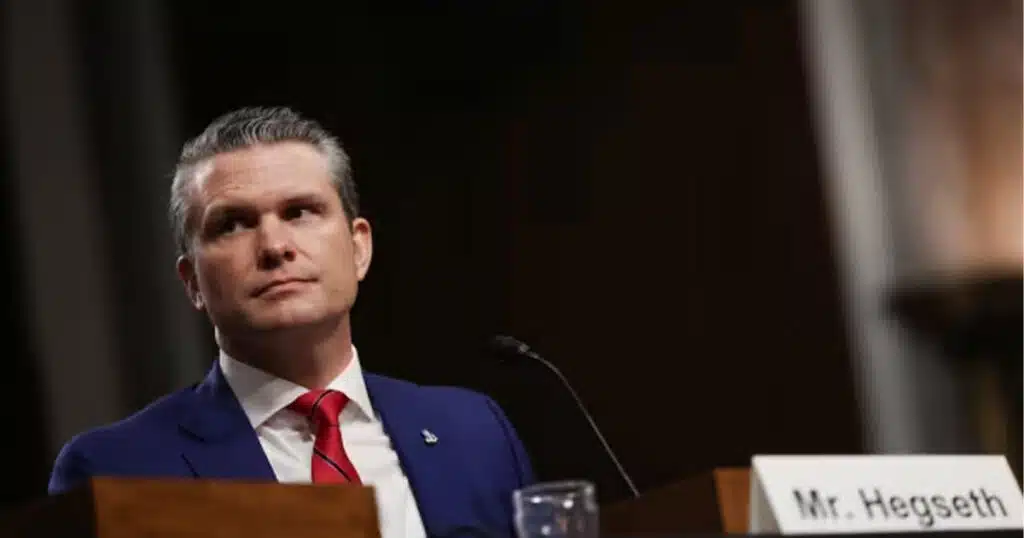
I Challenged Duke’s DEI Dogma – and Paid With My Job
I was heartened to see my former employer, Duke University Health System, quietly reverse its commitment to woke racism this year. I had joined the internal resistance to its diversity, equity, and inclusion crusade and was fired because of it. Here’s my story.
Without public notice, the 38,000-employee organization scrubbed its website of the commitment to DEI it had trumpeted in 2021, when it proclaimed racism a “public health crisis,” and “equity” as its cure. Now, all such fealty to DEI has been discarded with its new 2025 statement of values.
The title of its 2021 pledge to patients – “Duke Health Stands Against Racism, Bias, and Hate” – has been replaced by “Leading with Heart: Rooted in Humanity.”
No doubt some of this change is due to increasing pushback to those policies: a federal civil rights lawsuit alleging pervasive racial discrimination in its hiring and admissions practices, and the Trump administration’s freezing last month of $108 million of federal monies to Duke University and Duke Health because of “the illegal use of racial preferences.”
Duke Health did not respond to requests for comment.
I worked at Duke for 10 years without incident before spending the last few years of my tenure battling the 2021 policy – at the cost of my job as an emergency room physician, which is now the subject of a separate lawsuit I have brought. As much as I would like to proclaim victory, I do not want this episode to get memory-holed by organizational leaders who would rather we forget the moral panic that gripped them and the price many of us paid for their destructive and divisive efforts. As the country pulls back from the pernicious ideology of DEI, there are countless other people like myself who suffered the repercussions for refusing to buckle to the madness.
Lest there be any misunderstanding, let me be clear: Everyone I know is opposed to racism, bias, and hate, but Duke distorted those words to indict white doctors and nurses for complicity in the poorer health outcomes of black patients.
My own form of resistance began in 2018 when Duke’s chief diversity officer gave a talk on implicit bias at a physicians’ meeting. I was shocked by what I heard. For the previous six years, I had been secluded from the world, working weekends in the ER while spending the week homeschooling my children. I was blithely unaware that academia had shifted from a love of Western civilization (a mandatory course when I was in college) to a disdain. The diversity officer told us that “society can be broken up into two groups, the oppressors (those with power – essentially, white males) and the oppressed.” With stunned incredulity, I wondered, “Who thinks like this?”
One week later, and purely coincidentally, I read “The Communist Manifesto” by Karl Marx. There it lay in his opening paragraph: “The history of society is the history of class struggles…of oppressor and the oppressed.” As I continued reading, I was shocked by how similar Duke’s diversity officer sounded to the discredited 19th-century polemicist. Didn’t she know Marx seized on this confrontational construct as dynamite to obliterate the current capitalist system via the communist revolution? Although Marx held out hope for one day creating an imagined classless society, the purpose of his model was destruction. Desiring answers, I read all I could on diversity, equity, and inclusion, and the historical origins of this ideology. I expressed my concerns over the divisiveness of her ideas. “What else do you propose?” she asked me. I was prepared, and quoted social psychologist and author Jonathan Haidt:
“To make a human hive, you want to make everyone feel like family. So don’t call attention to racial and ethnic differences; make them less relevant by ramping up similarity and celebrating the group’s shared values and common identity. You can make people care less about race by drowning it in a sea of similarities, shared goals, and mutual interdependencies.”
Haidt’s advice seemed like common sense to me. There was an awkward, discomfited pause before she responded, “That’s not our model.” Discussion over.
After the George Floyd riots in 2020, Duke’s embrace of DEI tightened. The university prepared an antiracist pledge to the community, dedicating itself to equity. It read, in part:
“We commit to the elimination of racial inequities. … We recognize our own implicit biases and actively seek, listen, and respond to feedback from others as part of our personal growth and development. When confronted with racism, we always take action to speak out against it. … We are guided by science and know that excellent research and health care cannot happen without equity.”
Call for Questions
Before its public release, Duke asked its employees if they had any “questions or concerns” regarding the content. I knew remaining silent meant giving tacit approval to their political pursuits, and I thought it unfair of them to strong-arm our complicity, knowing most people would fear “poking the bear,” as I was warned. Not totally naïve to the danger, I spoke up.
Upon questioning the pledge, I was told by an ill-informed chief medical officer (CMO) that equity did not mean “equal outcomes for groups,” as I had feared, but rather “equal distribution of resources and equal access to treatments.” However, my reading on DEI told me this was a dodge, that its advocates believed if racial groups were given equal “resources and access” then outcomes for groups necessarily would follow. The proof for “equitably distributed resources” could only be equal group outcomes.
The pledge alleged “racism is a public health crisis,” an assertion that was purportedly “guided by science,” and signed by four senior-level physicians. As racism was not my observation, I asked my supervisor for the medical data supporting this audacious claim that racism was the primary driver of the unfortunate health disparities among many African Americans. He did not have the evidence, nor did he offer to find it. So, I approached the CMO. He likewise did not have the data, nor did he offer to look into it. At this juncture, I was beginning to understand this ideology as tyrannical, precariously held in place by fiat – an automatic red flag to its dubious legitimacy.
Next in line was Duke Health’s vice president. My supervisor urged caution in approaching him. “Why,” I thought, “is the data a state secret?” I was redirected to the chief architect of the pledge, who sent me eight studies to read. Unconvincingly, the studies showed differences in racial outcomes without any link to implicit bias (unconscious racism) as alleged. The assumption was that unequal outcomes were proof of harbored unconscious racism. I pressed the architect: “I did not see a correlation between outcomes and unconscious racism in these studies, did you?” He conceded he did not, but there were “social science studies” linking implicit bias to unequal outcomes. I was dumbfounded and, as a physician trained in evidence-based/clinical data, I was uninterested in social science studies. I had social science studies of my own with different conclusions. The pledge misleadingly claimed to be “guided by science,” only it was not medical science.
Disagreement Turns Dangerous
My persistent efforts nettled Duke, and tension was growing. A nurse saw me reviewing those eight studies at work and asked what I was working on. This segued into a discussion about implicit bias. We civilly disagreed, and I assumed that was the end of the matter. I soon learned that she reported me to the ER supervisor. A few days later, my presence was requested in his office along with a human resources representative in tow. I wasn’t asked what had happened or for my side of the story. I was simply told the nurse felt my speech was “unsafe.” Instead of receiving instruction on the science of implicit bias, I received a hard lesson on how this dogma would be wielded in the workplace.
It was Kafkaesque, with the conclusion predetermined, with no evidence presented to me and none asked of me. With the gravity of the proceedings sinking in, I leveled my gaze to his and inquired, “Which ideas were unsafe?” He seemed flummoxed that I asked, telling me he wasn’t prepared to discuss it. All that mattered was my expression of opinions inconsistent with Duke’s dogma. In addition, as a doctor, I had exploited a power differential with the nurse – who had initiated our conversation – leaving her, presumably, in no position to withstand a conversation with me, even though I wasn’t her supervisor. In consequence, I was forbidden to speak about or discuss the pledge in any way with anyone while on Duke property. I had been silenced.
Around that time, I had reached out to the new president of Duke Raleigh Hospital regarding the subject of equity. Earlier, I had informed Duke that equity seemed like discrimination and a new form of racism in line with the work of Ibram X. Kendi, whose bestselling work, “How To be Anti-Racist,” was recommended reading. In this left-wing, social justice bible, Kendi famously claimed the “only remedy to past discrimination is present discrimination. The only remedy to present discrimination is future discrimination.”
I arranged a meeting with her, indicating I had one question I wanted made official and on the books, not a passing curb-side consult. To my surprise, she brought along HR for backup. “Here is my question,” I said, “Please explain why equity is a better goal for society than equality.” In my mind, equity was the foundation upon which the whole woke edifice rested, and I wanted to know why America’s original foundation of equality, in place since 1776, was being replaced. The president never got back to me with an answer, but suggested that if others joined me, then maybe Duke would reply. She knew others would never join, and Duke would never explain itself.
Since the head of HR was at my meeting with the president, I sought a substantive answer from her. Instead, she sent this: “Duke leaders have shared with you that these commitments were made after many opportunities listening to the voices of the people we serve. Our commitment is resolute.” Duke was resolute, resolute to not answering my question.
I asked my supervisor why Duke was refusing to answer my concern about equity, as it seemed discriminatory by favoring certain preferred groups. He said that whenever Duke speaks with me, I share their responses with others. It was true. Was that a crime? The pledge was a public document; shouldn’t their defense of it be public as well if they were willing to provide one? I said, “Supervisor, do you hear the words coming out of your mouth? Duke does NOT want the public to know why it values equity above equality? How strange.”
I decided to put equity on pause and test diversity. I wrote to the CMO, “Does diversity mean that Duke hires the best and the brightest, or is diversity a goal to be sought as an end in itself?” The response I received, minus some verbiage, was, “Diversity is a Duke value.” “Right,” I said, “but as a goal or as an accommodation of hiring the best and the brightest no matter how it looks?” He wouldn’t say.
When I asked my supervisor, he responded, “My opinion is that our emergency department team should be focused on the delivery of high quality emergency medical care to anyone seeking it. This is my singular focus as medical director. Duke’s values and policies serve as a guide for me in that work and should guide all of us in our care of patients at DRAH [Duke Raleigh Hospital]. Persistent emails demanding debate are a distraction and consume time that could otherwise be better directed.”
The ER Is Colorblind
I wrote back to my supervisor: “It was an important question. It never occurred to me that diversity would be a goal. I thought diversity was a way of acknowledging that greatness comes in various shapes, sizes and colors, and that we should be open to it. However, the goal should be greatness and excellence, not diversity for its own sake. Priorities seem twisted. We should look for the person best fitted and capable for the job rather than looking at melanin or gonads when hiring. Merit is a better way to deliver high quality care.” (I wanted to tell him we both knew how silly these ideas were. When a patient comes into the ER struggling to breathe, bleeding out, or crashing in any way, all we think about is the algorithms in our heads for cheating death, not the physical characteristics of the person on the gurney. Every save is cause for equal celebration and reflects on our skill and training as physicians.)
I shared most communications with family and co-workers so they could stay abreast of developments. My colleagues cautioned against foolhardiness and quixotic endeavors, and my family feared for our livelihood. Moreover, my wife said termination would be an embarrassment. I was counseled to keep quiet because things would turn on their own, and my meager efforts wouldn’t make a ripple. The prudent path was to keep my head down and lie low. The pendulum would swing. The confrontation with Duke brought tense moments between my wife and me. To her credit, she did become a staunch supporter as Duke showed its ineptitude.
I had read “The Gulag Archipelago,” including Solzhenitsyn’s conclusion that the work camps were the result of good men holding their tongues and taking the expedient path in the face of evil. I knew the equality of individuals was the good and proper goal for society. Individuals were created equal, not groups, and imperfect equality was better than forced equity. I was convinced Solzhenitsyn was right when he said, “If one man can tell the truth, and always tell the truth, and never lie, he can bring down a tyranny.”
It was clear to me that Duke was not interested in substantive diversity, only superficial diversity. Each year, we could propose a change to help improve the health system. As I could find no conservatives in leadership or on the board, I recommended a diversity of ideas by actively seeking out conservative voices for leadership positions to offset their uber-left echo-chamber. The leadership declined. Apparently, it’s not a diversity of ideas that matters, but diversity of color and genitals. I sensed most medical professionals at Duke agreed with me, so the next year I asked for an anonymous survey of the employees with this question: “Would you rather be judged and treated based on your personal and individual qualities or by your group identity?” Duke said they couldn’t do anonymous surveys. My supervisor and CMO never replied after I showed them that Duke had done so in the past.
Told To Go Home
I had pushed them near the breaking point, not with difficult questions, but embarrassingly simple ones. How had this whole DEI fiasco been allowed to progress this far? I showed up for work on Jan. 1, 2024, but was instead directed to a room with the president and the CMO while a security officer stood outside. Having done nothing medically or ethically wrong, I was told I was being terminated “not for cause.” The president opined, “You don’t seem surprised.” I replied, “From the first day I spoke up, I knew this was a possibility.” I was given six months’ notice.
“Go home,” they said, “we have someone to cover your shift.”
“I’m fine,” I said, “I don’t want anyone covering my shift.” They insisted. What bothered me more was walking back into the house and facing my wife. How would I tell her? She is strong, but this stung and needed processing.
One year later, when it was time to renew my medical license through the North Carolina Medical Board, I had to answer in the affirmative that I had been terminated from a previous position. This triggered an investigation, which triggered more stress and more consultations with my lawyer. Duke listed the cause of my termination as “disruptive behavior.” However, nothing I did qualified as disruptive behavior per the board’s website. Fortunately, the Board found no violation.
Finding a new job that would not require moving became difficult. Attaining employment at a new hospital as an employee was typically blocked by HR. I would interview with the medical director, and things would be fine until HR found out who I was. I eventually found a facility where I work as a contractor (not an employee), a little more than an hour’s drive from home. With twelve-hour shifts and driving back and forth, it makes for a long day.
As my hero Jordan Peterson, the Canadian psychologist, says, “always tell the truth and you will have the adventure of your life.” The adventure may not be easy, but it will be worthwhile. Have faith that continually telling the truth, whatever happens, will eventually be for the best. Don’t let falsehoods pass by you.
Some people think I was courageous. I was not. With a timid and small voice, I barely dared to ask the first question. It was Duke’s pathetic answers and evasions that emboldened me. Its supervisors weren’t so smart, they were just more fearful of the people above them than I was.
As Duke has quietly changed its pledge, I have grown to feel indomitable – and vindicated. My biggest takeaway was what this experience allowed me to tell my four children, “You will fear something. Fear God, not man. Never shy away from asking questions in the pursuit of truth.”
Dr. Kendall Conger is a practicing emergency room physician in North Carolina. He can be reached at l[email protected].
This article was originally published by RealClearInvestigations and made available via RealClearWire.



